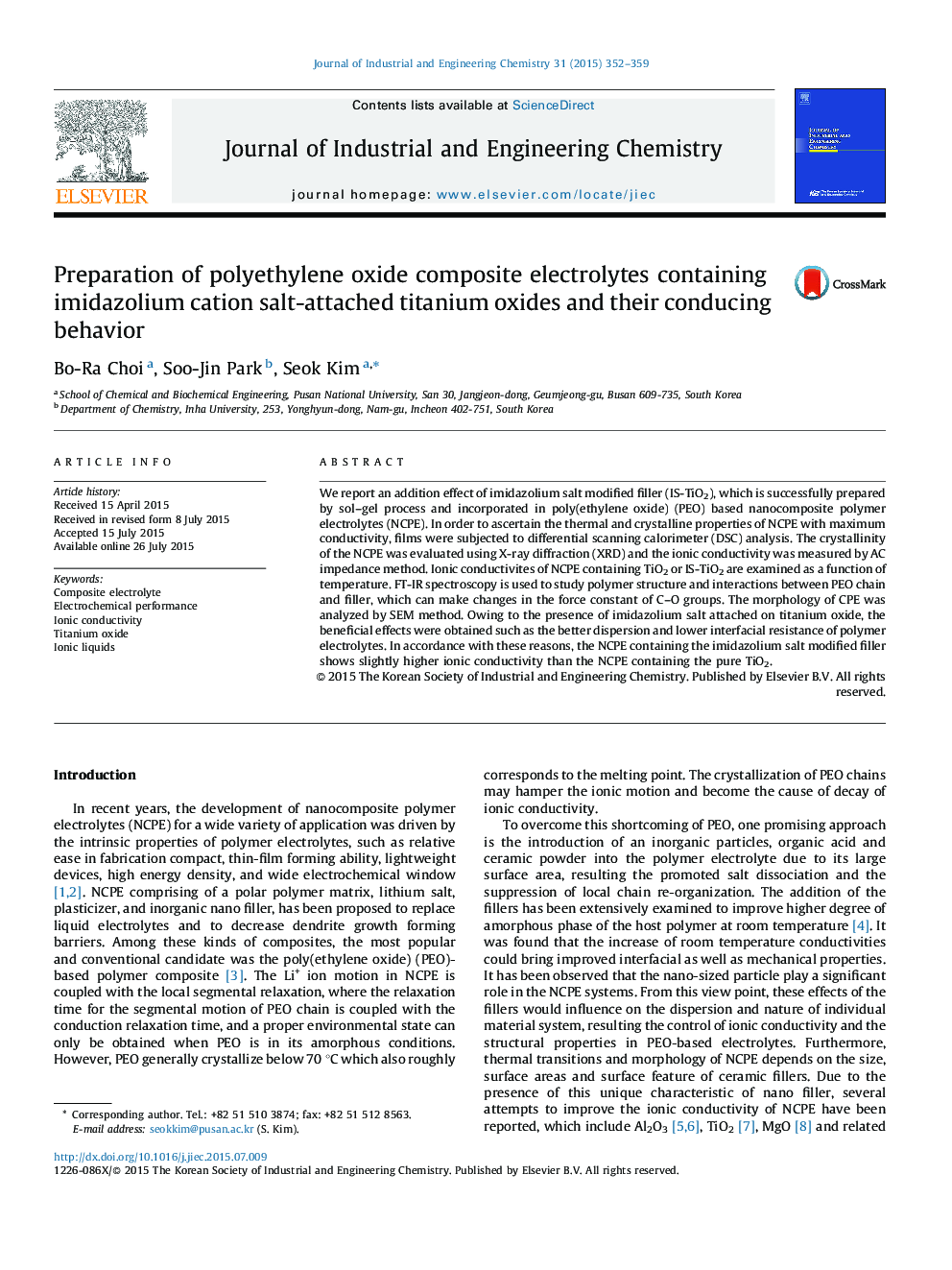| Article ID | Journal | Published Year | Pages | File Type |
|---|---|---|---|---|
| 227022 | Journal of Industrial and Engineering Chemistry | 2015 | 8 Pages |
We report an addition effect of imidazolium salt modified filler (IS-TiO2), which is successfully prepared by sol–gel process and incorporated in poly(ethylene oxide) (PEO) based nanocomposite polymer electrolytes (NCPE). In order to ascertain the thermal and crystalline properties of NCPE with maximum conductivity, films were subjected to differential scanning calorimeter (DSC) analysis. The crystallinity of the NCPE was evaluated using X-ray diffraction (XRD) and the ionic conductivity was measured by AC impedance method. Ionic conductivites of NCPE containing TiO2 or IS-TiO2 are examined as a function of temperature. FT-IR spectroscopy is used to study polymer structure and interactions between PEO chain and filler, which can make changes in the force constant of CO groups. The morphology of CPE was analyzed by SEM method. Owing to the presence of imidazolium salt attached on titanium oxide, the beneficial effects were obtained such as the better dispersion and lower interfacial resistance of polymer electrolytes. In accordance with these reasons, the NCPE containing the imidazolium salt modified filler shows slightly higher ionic conductivity than the NCPE containing the pure TiO2.
Graphical abstractWe developed the modified filler in order to enhance conducting performance of composite electrolytes for a lithium polymer-ion battery. The highest ionic conductivity of containing IS-TiO2 at room temperature is higher than that of TiO2. Owing to the presence of imidazolium salt attached on titanium oxide, the beneficial effects were obtained such as the better dispersion and lower interfacial resistance of polymer electrolytes.Figure optionsDownload full-size imageDownload as PowerPoint slide
